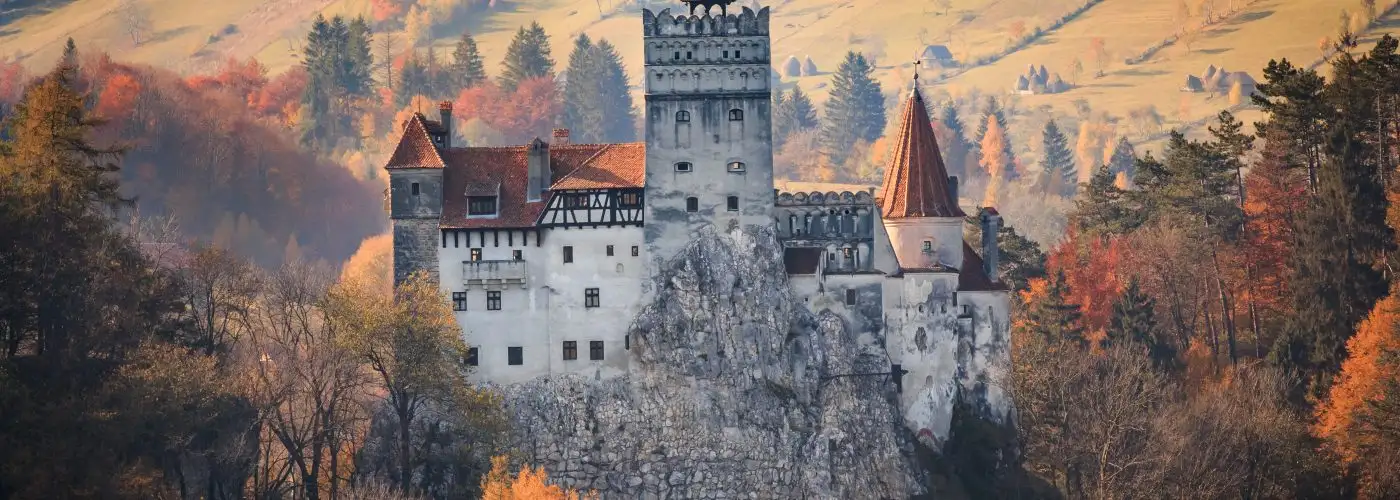You don’t have to be a cryptozoologist to search for creatures whose existence hasn’t yet been proven—you just need a good map, a keen sense of adventure, and a trusty camera. And while you might not actually catch a glimpse of the Yeti, Chupacabra, or other supernatural spooks, you will discover something even more incredible: some of the world’s most dramatic places.
Image Gallery
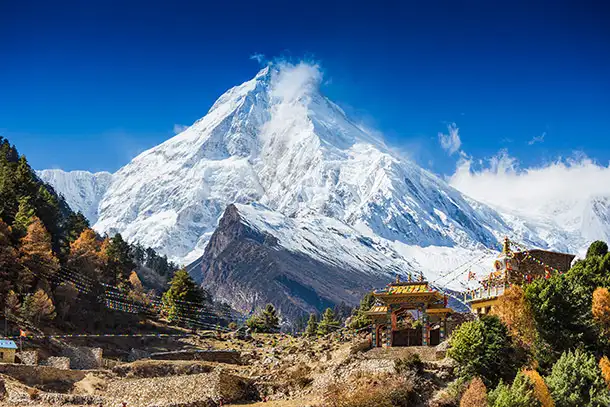
Yeti
The Yeti, sometimes called the Abominable Snowman, is part ape and part man, and it's believed to roam the snowy Himalayan Mountains. The legend of the Yeti dates back to folktales in Nepal, but really took off when British explorers saw large footprints on an Everest expedition. Many attribute Yeti sightings to brown bears.
Where to Find it: The Himalayas.
Stretching across northeastern India, the Himalayan range also runs through Nepal, Bhutan, Pakistan, Afghanistan, and Tibet. It includes the world's largest peak, Mount Everest, but the area is ecologically diverse, with tropical climates at the base.
Your best bet for Yeti-spotting is among the thousands of glaciers found at higher elevations, particularly in Nepal. The Himalayas cover 75 percent of Nepal, making the nation a mountaineering mecca. It's also packed with culture: Many of its temples and monasteries are preserved as UNESCO World Heritage Sites.
Search for: Vacation Packages | Hotels | Flights
RELATED: 10 Taboo Tourist Destinations (and How to Visit Them)
(Photo: Mt. Manaslu, Himalayas, Nepal via Shutterstock)

Yeti
The Yeti, sometimes called the Abominable Snowman, is part ape and part man, and it's believed to roam the snowy Himalayan Mountains. The legend of the Yeti dates back to folktales in Nepal, but really took off when British explorers saw large footprints on an Everest expedition. Many attribute Yeti sightings to brown bears.
Where to Find it: The Himalayas.
Stretching across northeastern India, the Himalayan range also runs through Nepal, Bhutan, Pakistan, Afghanistan, and Tibet. It includes the world's largest peak, Mount Everest, but the area is ecologically diverse, with tropical climates at the base.
Your best bet for Yeti-spotting is among the thousands of glaciers found at higher elevations, particularly in Nepal. The Himalayas cover 75 percent of Nepal, making the nation a mountaineering mecca. It's also packed with culture: Many of its temples and monasteries are preserved as UNESCO World Heritage Sites.
Search for: Vacation Packages | Hotels | Flights
RELATED: 10 Taboo Tourist Destinations (and How to Visit Them)
(Photo: Mt. Manaslu, Himalayas, Nepal via Shutterstock)
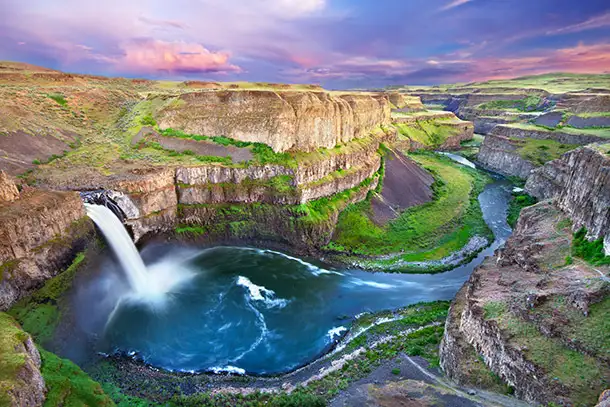
Sasquatch
Not to be confused with the Yeti, the Sasquatch is native to the Western world. Indigenous tribes of the Pacific Northwest have various legends of the creature, with most referring to a dark haired, ape-like wild man. Sasquatch may also be referred to as "Bigfoot" and is generally believed to stand up to nine feet tall and weigh several hundred pounds.
Where to Find it: The Pacific Northwest.
The highest concentration of Sasquatch sightings are in Washington, Oregon, California, and British Columbia. Washington even hosts a music festival named after the creature, held annually in at the highly picturesque Gorge Amphitheatre. Large swaths of forested mountains, starting at Mount Shasta in the south to Whistler Mountain in the north, are ideal Sasquatch territory (Mount St. Helens is a supposed hot-bed of activity).
But the entire Cascade Range is also perfect for normal-sized humans who want to hike to waterfalls and turquoise alpine lakes, ski down power-filled slopes, or step back in time among fields of dried lava.
Search for: Vacation Packages | Hotels | Flights
(Photo: Palouse Falls, Washington via Shutterstock)
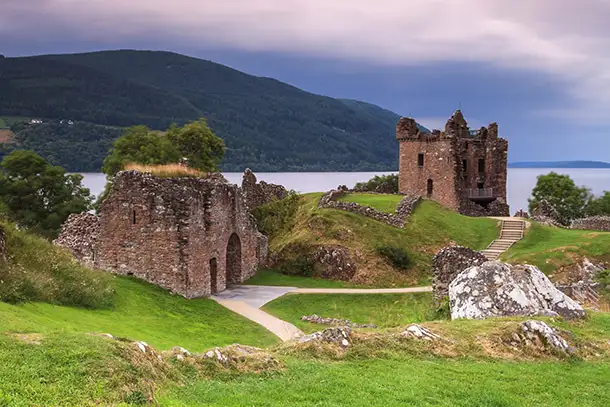
Loch Ness Monster
Affectionately called "Nessie" by locals and those who think the creature is misnamed (and perhaps misunderstood), the Loch Ness monster was first spotted in 565 C.E. when an Irish priest reportedly saw the brontosaurus-like sea creature.
Where to Find it: Scotland.
Loch Ness in the Scottish Highlands is 700 feet deep, more than 20 miles long, and around a mile wide, making it the largest lake in Scotland by volume. Neighboring Inverness and the surrounding areas are home to historic battlefields, whiskey distilleries, and several castles, including Urquhart Castle on the northwestern shore of Loch Ness.
Once one of the country's largest castles, Urquhart has commanding views of the lake and Great Glen. The 70-plus-mile Great Glen Way long-distance walking trail is a fine way to experience the area's scenery, taking trekkers from Inverness to Fort William.
Search for: Vacation Packages | Hotels | Flights
RELATED: 17 Photos That Prove Scotland Is the Most Beautiful Place on Earth
(Photo: Loch Ness, Scotland via Shutterstock)
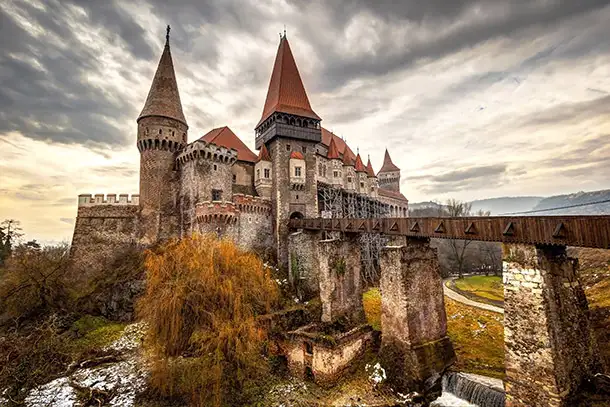
Vampire
Though numerous authors have taken artistic liberties with vampires in recent years, the gold standard for this creature of the night remains Count Dracula. Supposedly based on a Romanian prince, Dracula is of the breed of vampires that are human corpses returned from the dead to wreak havoc on the living. Around the world, several characterizations exist, but all vampires share one trait: They drain victims of blood.
Where to Find it: Romania.
According to Romanian legend, you need to set a boy dressed in white atop a white horse in a graveyard at midday. Whichever grave the horse stops at is a vampire. Or you can simply visit the Transylvania region inRomania, known for medieval towns and inspiring vampire lore.
Among the numerous citadels, Bran Castle is perhaps the most famous for playing home to Dracula in Bram Stocker's novel of the same name. The Carpathian Mountains border much of the region and are host to many of Romania's national and natural parks favored by outdoor enthusiasts, including Retezat National Park.
Near Retezat is another citadel, Corvin Castle. It's considered the country's greatest Gothic castle.
Search for: Vacation Packages | Hotels | Flights
(Photo: Corvin Castle, Romania via Shutterstock)
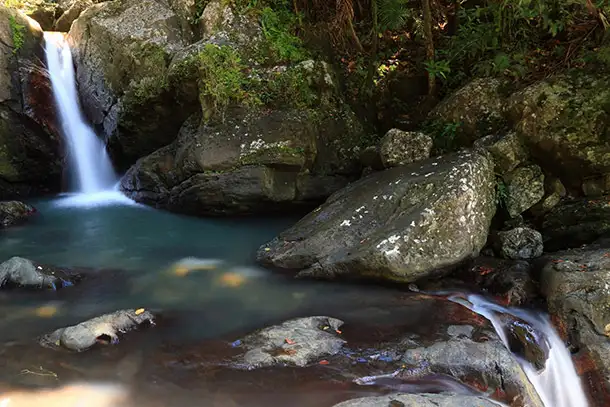
Chupacabra
Said to attack animals (it's especially fond of goats), the chupacabra first burst on the scene in the 1990s when animals around Puerto Rico were found dead from puncture wounds in the neck. The legend spread throughout Latin America that a blood-sucking mash-up of a vampire and lizard was to blame for the deaths of animals as varied as cats and chickens. According to non-believers, dogs and coyotes are the real culprits.
Where to Find it: Puerto Rico.
Beyond the more than 270 miles of turquoise-blue coastline with innumerable beaches, Puerto Rico is home to a prolific rum industry and packed with culture.
Its historic citadels and other fortifications are protected as a UNESCO World Heritage Site . But to track down a chupacabra, head to an area densely populated with fauna: El Yunque National Forest. The 28,000-acre tropical rainforest has waterfalls that cascade into pools perfect for swimming after a hike, hundreds of species of small animals, and views of the Atlantic and Caribbean.
Search for: Vacation Packages | Hotels | Flights
RELATED: What It's Really Like to Visit Puerto Rico's Bioluminescent Bay
(Photo: El Yunque rainforest, Puerto Rico via Shutterstock)
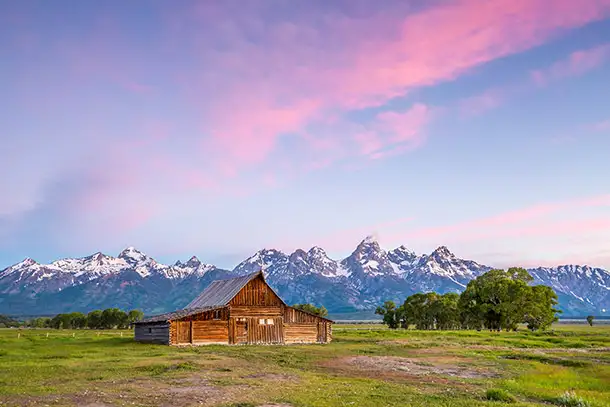
Jackalope
A jackrabbit with antelope horns or deer antlers, the jackalope is widely accepted as a creature born of some creative taxidermy. Douglas Herrick is credited with mounting a rabbit and deer horns together in the 1930s in his shop in Douglas, Wyoming. For years prior, cowboys had claimed the ditties they sang to their cattle were repeated back to them by the jackalope.
Where to Find it: Wyoming.
Though you may find rabbits afflicted with a particular (often fatal) virus developing horns on their head or face, you're more likely to find taxidermic jackalopes in bars throughout the West, as well as a giant fiberglass jackalope outside the famed Wall Drug in South Dakota.
To get a little outdoorsy, and perhaps spot rabbits and deer antlers (though separate from one another), head to Thunder Basin National Grassland just north of Douglas, the birthplace of the jackalope. Or head across the state to Grand Teton and Yellowstone national parks in western Wyoming.
Search for: Vacation Packages | Hotels | Flights
(Photo: Grand Tetons, Wyoming via Shutterstock)
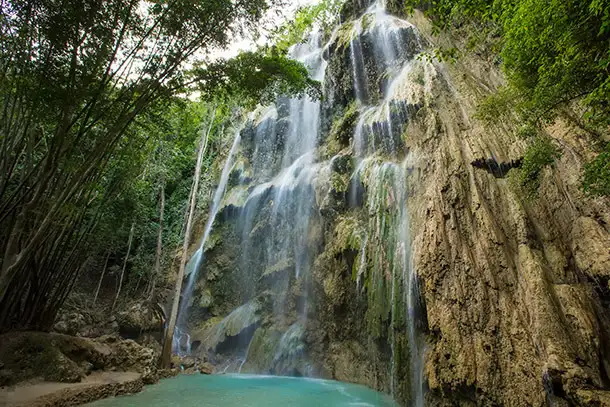
Bungisngis
According to Philippine folklore, the Bungisngis is a one-eyed giant, much like the Cyclops from Greek mythology. In addition to its one eye, the creature is said to have tusks, oversized teeth, and a hearty laugh that is often the last sound its victims hear. It favors forests and woodlands.
Where to Find it: Philippines.
More than 7,000 islands make the Philippines a go-to beach destination. But it's also an outdoor adventurer's paradise with hiking and zip lining popular on land, and diving and kayaking on water. For some of the best wooded areas (and allegedly the home of the Bungisngis), head to Luzon, the country's largest and most populous island. Trek through the Cordillera Mountains, north of Manila, and discover the region's emerald green rice terraces, listed as a UNESCO World Heritage Site for their cultural heritage that has been traced back as far as two millennia. But remember, if you hear laughter, run.
Search for: Vacation Packages | Hotels | Flights
RELATED: 10 Places You Need to See to Believe
(Photo: Cebu, Philippines via Shutterstock)
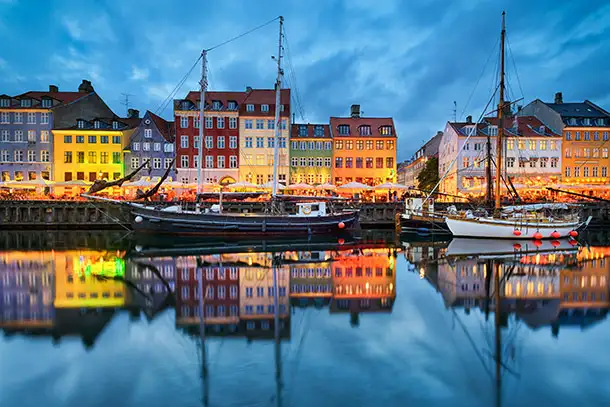
While numerous depictions of the fairy exist access cultures, the fairies of Norse tradition are often depicted as female, elf-like creatures with a penchant for magic. Tales coming from Sweden and Denmark highlight the beauty of these creatures—and their cunning ability to trick men (surely the beauty helps).
Where to Find it: Scandinavia.
In the twilight hour, when lights reflect off the canals weaving their way through Denmark's capital, you may think Copenhagen gets a nightly sprinkling of fairy dust. And forget the scientific explanations for the Northern Lights; the colorful light display is most certainly the result of a migrating fairy army.
Experience it firsthand in Tromso, Norway, the unofficial capital of aurora watching. Scandinavia is also best appreciated at the dining table, where fresh seafood dominates the diet and is often found atop the region's famous open-faced sandwiches.
Search for: Vacation Packages | Hotels | Flights
(Photo: Copenhagen, Denmark via Shutterstock)
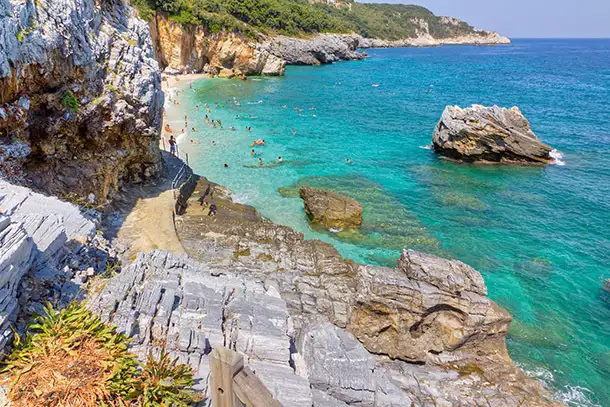
Centaur
Perhaps one of the most enduring creatures to come out of Greek mythology, the centaur has the body of a horse with the torso, arms, and head of a man. These cunning creatures, though partially resembling humans, weren't friendly toward mankind and acted on their more primal instincts.
Where to Find it: Greece.
Said to live in herds around Mount Pelion in Thessaly, centaurs unfortunately didn't take advantage of the prime skiing location. The area sits between the Pagasetic Gulf and the Aegean Sea, so you'll want to hit the beaches just as much as the mountains.
One of the area favorites is Milopotamos, known for its golden sand and clear, clean water. Dozens of villages are scattered throughout the region; stop through several of them aboard the local steam train. And at the end of a long beach day, nothing is better than stopping at a fish tavern for fresh seafood, washed down with tsipouro, a spirit made from winemaking remains.
Search for: Vacation Packages | Hotels | Flights
(Photo: Mylopotamos Beach, Greece via Shutterstock)
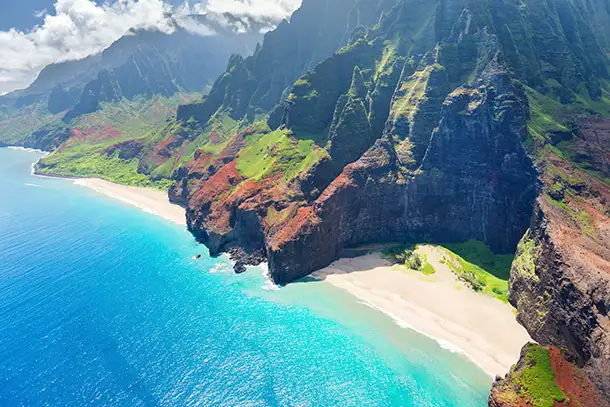
Menehune
The Menehune are characterized as mischievous dwarves, though their engineering feats are revered. They hide from humans in forests and valleys and are said to love bananas and fish. Some say they were chased away by the Polynesians, but others believe they're still carrying out tricks on the islands of the Pacific Ocean.
Where to Find it: Kauai, Hawaii.
While the Menehune are believed to have fled Kauai for Necker Island (part of the Northwestern Hawaiian Islands Marine National Monument), Kauai still contains numerous stone shrines and artifacts said to belong to them, such as the Alekoko Menehune Fishpond—allegedly built by the Menehune in one night.
But the seclusion of the Na Pali Coast State Wilderness Park is where we'd place bets on finding clues to the Menehune's existence. Access to the area is via the Kalalau Trail (permit required for anyone traveling past Hanakapi'ai Valley), and it's dramatically bordered by cliffs and the sea—the perfect protection for the so-called "little people."
Search for: Vacation Packages | Hotels | Flights
More from SmarterTravel:
- 10 Must-See Mythical Places
- 50 Fictional Places You Can Actually Visit
- 11 Destinations Harry Potter Fans Must Visit
We hand-pick everything we recommend and select items through testing and reviews. Some products are sent to us free of charge with no incentive to offer a favorable review. We offer our unbiased opinions and do not accept compensation to review products. All items are in stock and prices are accurate at the time of publication. If you buy something through our links, we may earn a commission.
Related
Top Fares From
Today's Top Travel Deals
Brought to you by ShermansTravel
Kenya: 14-Night Tour, Incl. Tanzania &...
smarTours
 vacation
$7125+
vacation
$7125+
7-Night Caribbean Round-Trip Cruise From Orlando:...
Norwegian Cruise Line
 cruise
$739+
cruise
$739+
Ohio: Daily Car Rentals from Cincinnati
85OFF.com
 Car Rental
$19+
Car Rental
$19+
